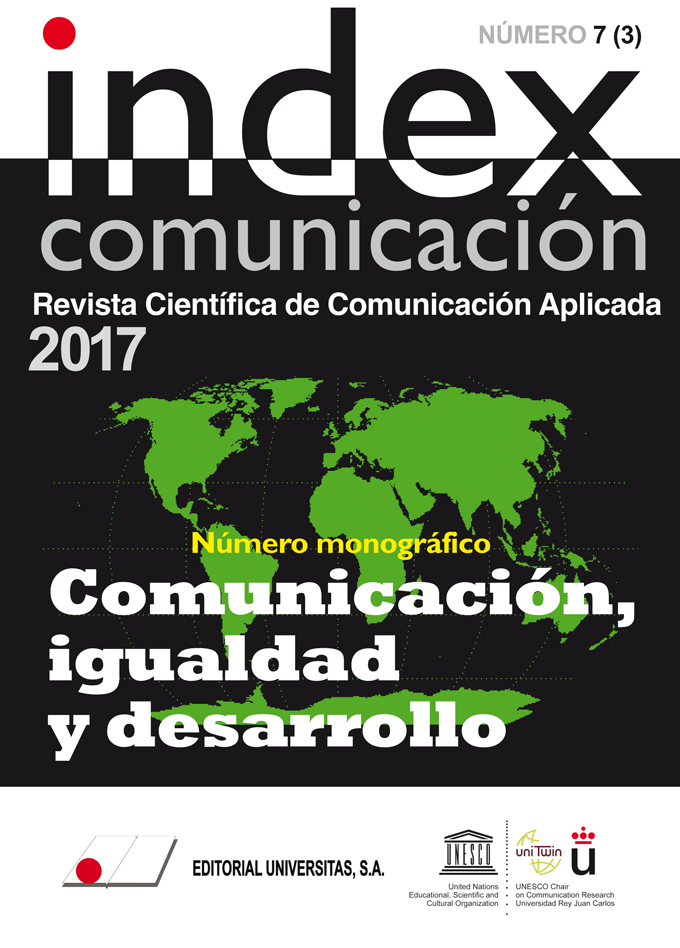Transformative narratives and ethical witnessing: the 7N Feminist Platform’s discursive strategies against gender-based violence
Keywords:
Gender-violence, Ethical witnessing, 7N Platform, Narratives, Social Change,Abstract
The aim of this article is to explore the transformative possibilites of the narratives produced on gender-based violence. Therefore, we will analyze the online discursive strategies developed by the Feminist Platform 7N to bring about an anlytical model built upon the concept of the ethical witnessing articulated by Oliver (2001; 2004). We will discuss the relationship between giving testimony and witnessing gender-based violence, the kind of discourse developed and if it helps to identify sencondary victimization. We will also discuss whether this kind of discourses could be emancipatory and at the same time whether these narratives could be part of the feminist fight for women’s rights. We conclude that certain activist praxis against gender-based violence can challenge the hegemonic frames of recognition of gender-based violence and thus produce discourses on the victims of the violence which can be ultimately emancipatory.
Metrics
References
Borraz, M. (2016): “Cuatro razones por las que el 7N contra la violencia machista vuelve a las calles un año después”. Eldiario.es Retrieved April, 2017, from http://bit.ly/2fwZSEu
Bracke, S. (2016): ‘Bouncing Back. Vulnerability and Resistance in Times of Resilience’. In J.Butler; Z. Gambetti & L. Sabsay (Edd.): Vulnerability in Resistance, (67-75). London: Duke University Press.
Brown, W. (1995): States of Injury: Power and Freedom in Late Modernity. New Jersey: Princeton University Press.
Butler (2014): ‘Rethinking Vulnerability and Resistance’.Retrieved May, 2017, from. http://www.institutofranklin.net/sites/default/files/files/Rethinking%20Vulnerability%20and%20Resistance%20Judith%20Butler.pdf
Butler, J., & Athanasiou, A. (2013): Dispossession: the Performative in the Political: Conversations with Athena Athanasiou. Cambridge, UK: Polity Press.
Cao, B. (2015): “Las feministas convocan para el 7N la primera marcha estatal “contra las violencias machistas”. Cuarto poder. Retrieved May, 2017, from http://bit.ly/2iDDjEn
De Miguel, A. (2003): ‘El movimiento feminista y la construcción de marcos de interpretación: el caso de la violencia contra las mujeres’. Revista Internacional de Sociología 35, 127-150.
Faulkner, E., & MacDonald, G. (2009): Victim No More: Women’s Resistance to Law, Culture, and Power. Nova Scotia: Fernwood Publishing Co.
Fraser, N. (2005): ‘Mapping the Feminist Imagination: From Redistribution to Recognition to Representation’. Constellations 12(3), 295-307.
Gámez Fuentes, M.J.; Gómez Nicolau, E.; & Maseda García, R. (2016): ‘Celebrities, violencia de género y derechos de las mujeres: ¿hacia una transformación del marco de reconocimiento?’. Revista Latina de Comunicación Social, 71, 833-852.
Gámez Fuentes, M.J., & Núñez Puente, S. (2013): ‘Medios, ética y violencia de género: más allá de la victimización’. Asparkia, 24, 145-160.
Marugán-Pintos, B. (2012): ‘Domesticar la violencia contra las mujeres, una forma de desactivar el conflicto intergéneros’. Investigaciones feministas 3,155-166.
Núñez Puente, S., & Gámez Fuentes, M.J. (2017): ‘Spanish feminism, popular misogyny and the place of the victim’. Feminist Media Studies, DOI: 10.1080/14680777.2017.1350527.
Oliver, K. (2001): Witnessing: Beyond Recognition. Minneapolis: University of Minnesota Press.
Oliver, K. (2004): ‘Witnessing and Testimony’. Parallax, 10(1), 79-88.
Osborne, R. (2009): ‘Construcción de la víctima, destrucción del sujeto’. Página Abierta 206, 8-13.
Published
How to Cite
Issue
Section
License
Authors who submit to this journal agree to the following terms:
Authors retain copyright and ensure the magazine's right to be the first publication of the work as licensed under a Creative Commons Attribution-NoComercial 4.0 International License that allows others to share the work with an acknowledgment of authorship of the work and the initial publication in this magazine, with no commercial purpose.
Authors can establish separate additional agreements for non-exclusive distribution of the version of the work published in the magazine (for example, to an institutional repository or publish it in a book), with an acknowledgment of its initial publication in this journal.
It allows and authors are encouraged to disseminate their work electronically (eg, in institutional repositories or on their own website) prior to and during the submission process, as it can lead to productive exchanges, as well as a citation more early and most of the published work (See The Effect of Open Access).















